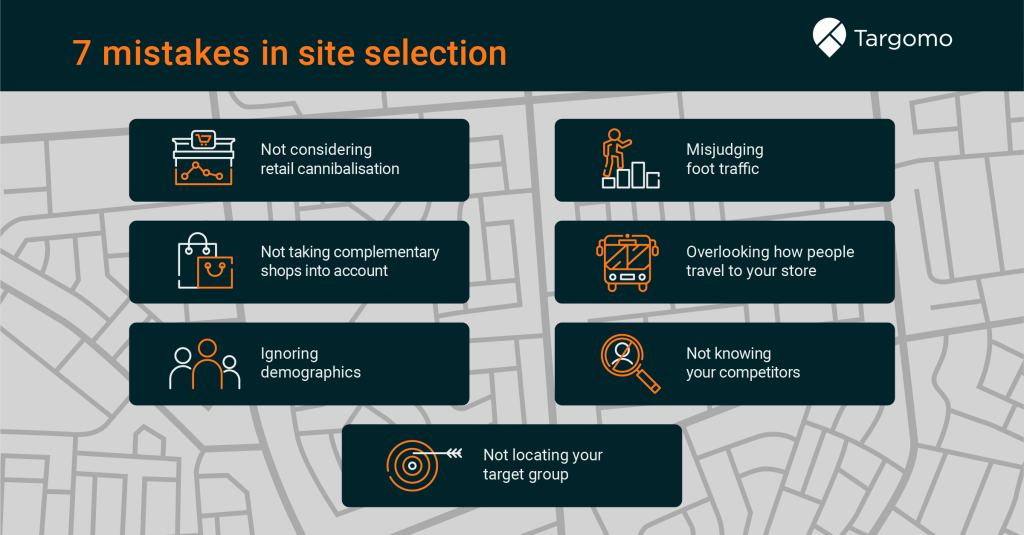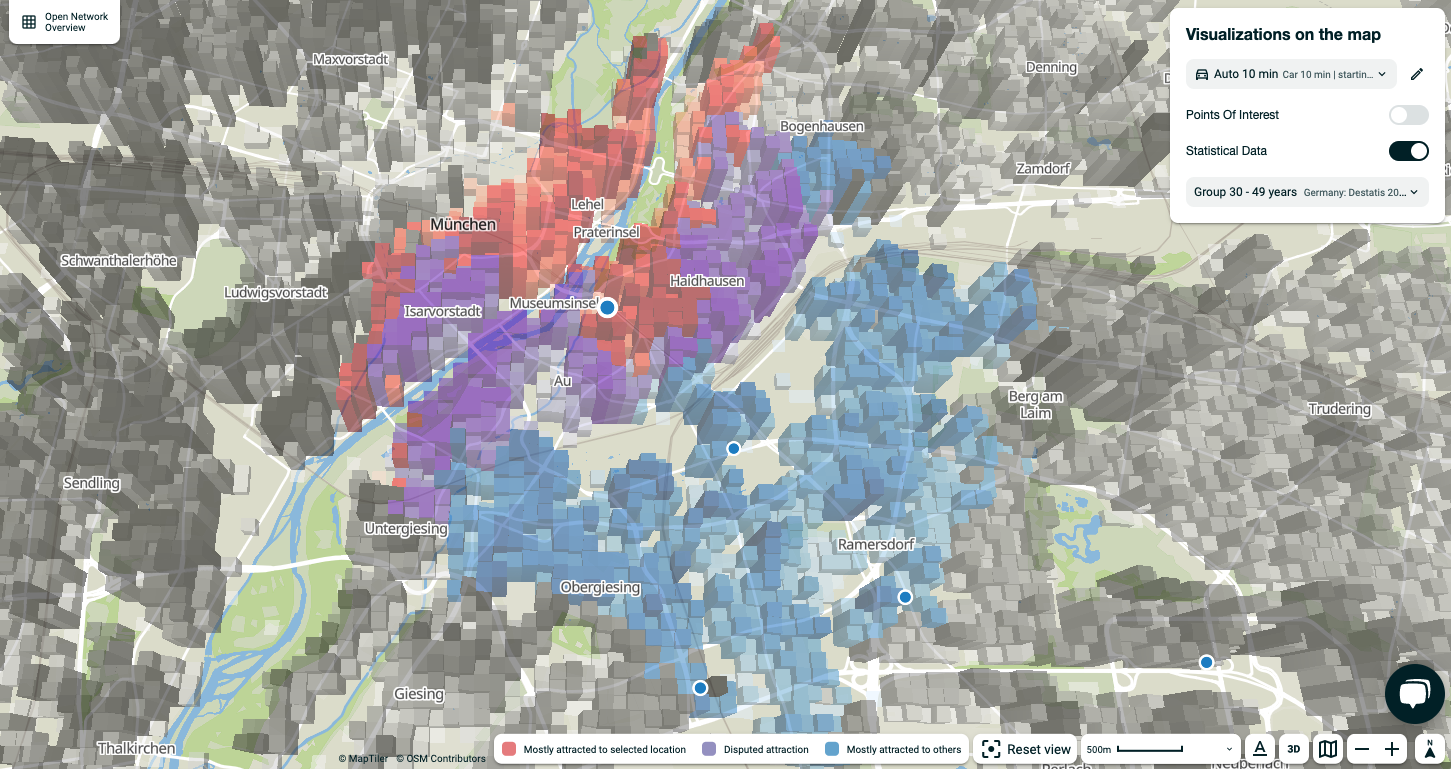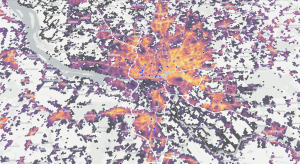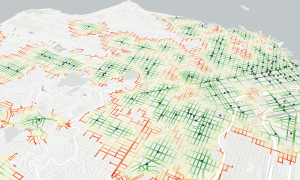
Choosing to open a new retail location is an exciting prospect, whether it’s your first store or the next in a chain.
The old adage “by failing to prepare, you are preparing to fail” has never been more apt than when choosing your next retail location. With so many factors to consider, as well as the pandemic creating shifts in how people shop, and a host of other trends to take into consideration, doing your research is vital.
Start your research journey here, with the help of this list of mistakes to avoid when choosing a new retail location.
1. Not considering retail cannibalisation
While it makes great economic sense to expand your bricks-and-mortar business into multiple locations, it’s important you watch out for ‘retail cannibalisation’.
In the first quarter of 2018, Starbucks – the popular coffee chain with a store on every corner – was suffering from market saturation. With so many stores available, and a burgeoning competitor market, its stock plummeted 11.38% at a time when the overall market was up 4.1%. As a result, it started shutting stores in the United States.
Of course, healthy competition is great for any business, but in the retail industry, cannibalisation occurs when branches of the same chain that are near each other end up competing with one another for the same business.
The same is also true of competitor businesses. If too many similar businesses are located in the same catchment area, customer loyalty and preference is going to favour one business over another. An oversupply of locations also leads to higher operational costs, as Starbucks found to its chagrin.

So before you decide for a location, check how your branches influence each other. A good technology solution lets users immediately see whether the new store would “steal” potential customers from existing shops in the same area and how many. They can also see how many customers they could potentially win from competing shops nearby, and how a competitor’s new location might impact the catchment area of their retail stores.
2. Not knowing your competitors
In 1920, American mathematician Harold Hotelling came up with a theory called Hotelling’s Model of Spatial Competition. His model shows that when competing for locations, every business wants the “central point” as it is the most strategic spot to be as close to as many customers as possible. But because every business has ultimately the same intention, stores become clustered around the same location and end up competing with one another.
Putting that theory into practice, Marc Smookler, a United States retail expert, conducted a study in Austin Texas in 2015. He concluded that CVS and Walgreens pharmacies were, on average, only 1.5kms apart, and Walmart and HEB (a grocery chain) were 1km apart.
So sometimes you’re drawn to an area because that’s where the market is. But you should also know who your competitors are, what they specialise in, what their USPs are and how your business is similar or different. And most of all: where they are located. Because this gives you the chance to identify “whitespots” with the highest market potential.
3. Not taking complementary shops into account
We’re all familiar with the concept of the strip mall (in Germany they’re also known as Fachmarktzentren): an out-of-town shopping area characterised by a centralised parking area and a parade of shops or big box stores clustered together. Over time, and even during the pandemic, these areas have out-performed city centre locations.
According to JPMorgan, “The pandemic had a major impact on retailers in city centres heavily reliant on office workers and tourism. But service-oriented strip mall retailers in densely populated urban and suburban neighbourhoods performed well throughout 2020 and 2021. These properties have consistently performed well regardless of market conditions.”
This successful recipe stems from considering other nearby businesses not as potential competitors, but as opportunities to draw the right target market to the location.
Complementary businesses offer products that relate to or complement yours: a pharmacy near a doctor’s office, a bar near a restaurant near a hotel, a sports shop near a gym, a pet supply store near a veterinarian, a cafe next to a bakery.
We recently interviewed a retail expansion manager who said “for my client who rents out deposit boxes to store people’s valuables, I analyzed how many banks are located around a potential new site”.
So if you are looking for the ideal location for your business, you should also analyse which other shops in the area complement your offer and are beneficial to your business.
4. Overlooking how people travel to your store
Understanding how people travel to your store is vital. Are you in the middle of a city where parking is at a premium? Are you out of town and far away from public transport? Do customers have to pay to park near your store? Do you sell large, bulky items that require a car?
It’s important not to overestimate how many people will travel to your store by car, and consequently underestimate how many will use public transport or other forms of mobility.
A recent study in Berlin, Germany, discovered that retailers often make the mistake of overestimating the amount of people who travel by car when they go shopping.
The report, which surveyed 145 traders about how they thought customers got to their shops, and interviewed 2,019 shoppers on two shopping streets in Berlin, discovered that shop owners overestimated how far customers travel to visit their businesses.
“Over half (51.2%) of shoppers lived less than 1 kilometre from the shopping street. In contrast, traders on average estimated that only 12.6% of customers live within this distance.” The results appear to show a big discrepancy between the perception of traders about customers’ mobility patterns and the actual reality.
Furthermore, the study appeared to show that traders often misjudged how customers travelled to their shops, underestimating public transport and overestimating car use.
“While only 6.6% of shoppers travelled to the streets by car, on average traders estimated 21.6% of their customers use this mode; a discrepancy of 15%,” says the report. “Further they underestimate transit, pedestrian, and bicycle travel by 8.1%, 6.2% and 3% respectively.”
Before deciding on a location, analyse it for accessibility, considering different modes of transportation such as walking, biking, driving, and public transportation.
5. Misjudging foot traffic
Foot traffic is one of the hallmarks of retail. At its most basic, it means the number of people walking past. It’s one of the key metrics for retailers, as the pedestrian activity near a shop influences sales volumes and increases the chance of spontaneous buying or “impulse purchases”.
So if you’re deciding on a location for your new business and benefit from spontaneous purchases or visits, you should take a closer look at this figure. But be careful: often a general figure is not enough. You should also consider whether there are fluctuations throughout the day and how foot traffic behaves on weekends compared to weekdays.
Furthermore, you should also check what causes the traffic. Are vehicle data included, or are only pedestrians counted? Just because a location has high frequency doesn’t mean that people have the time for a spontaneous visit to your store. Therefore, Foot Traffic should only count visitors who spend at least a certain amount of time in the area, not just passing through.
6. Overlooking demographics
But while foot traffic is important, it’s not the only consideration. During the pandemic lockdowns, foot traffic in some areas went down significantly as people preferred to shop close to their homes because of travel restrictions. Suddenly, hyper-local shopping became popular.
Because of this, it’s crucial to understand the demographics nearby, what the average household size is and how many children live there children, for instance. If you really understand the catchment area, you’ll discover how many potential customers can reach your location. This can give you a good understanding of whether the site is attractive or not and whether it will appeal to your target customers.
7. Not locating your target group
As a business owner, you probably have a fair understanding of who your target customer is. But defining who they are and locating them is not so easy. What problem is your business trying to solve for them? What is the benefit of your product? Do you serve a particular niche market, and do you have enough potential customers in your catchment area? What other companies nearby offer the same or a similar product or service as you? According to Marketing Donut, “successful marketing relies on understanding your target market. Who are you selling to? Why should they buy your product? What do they stand to gain?”
In a blog on WordStream, the writer Dan Shewan, said: “If you run a small business, maybe you have an idea of your target market. However, a vague idea is not enough to compete in today’s ruthless business environment. Without detailed knowledge of your target market, you could be losing business to your competitors or missing out on opportunities to increase sales.”
Ultimately, the right location is the place where your target customer visits or lives. With powerful location intelligence, you can unlock the door to compelling insights that could be the difference between business success or failure. With TargomoLOOP, you can analyse data such as population age groups, household size, spending power and lots more to help you understand how you can find and reach your target group.








